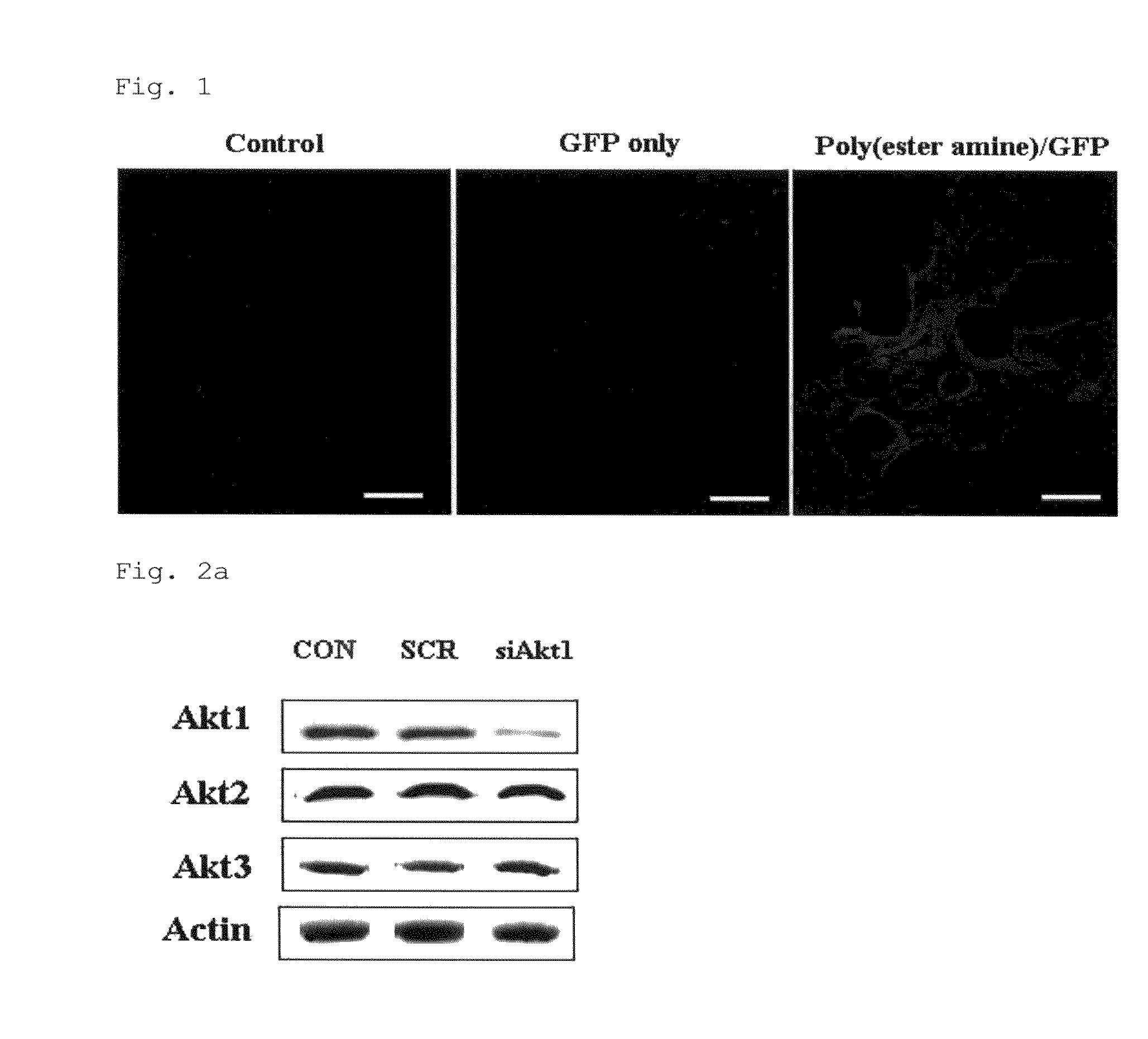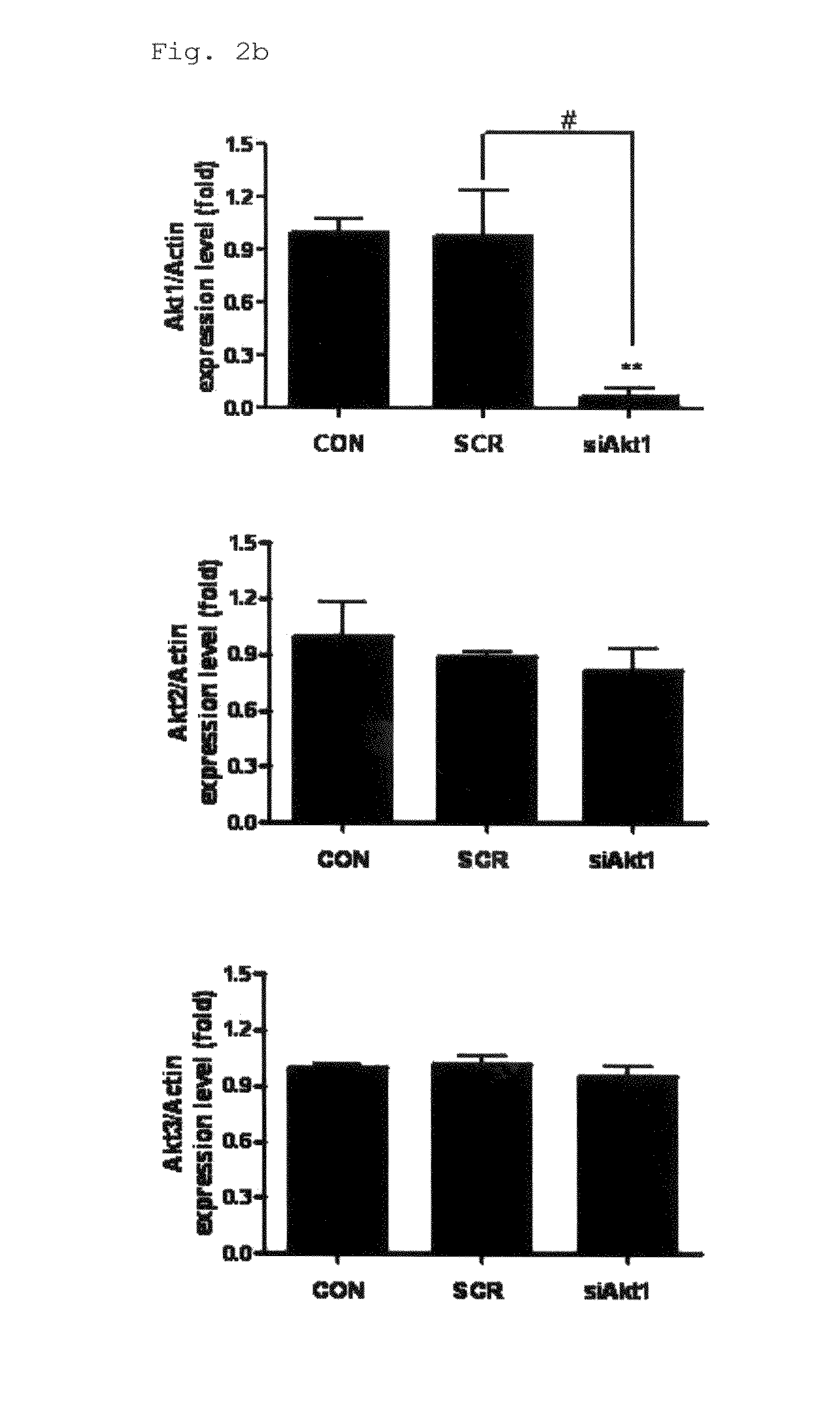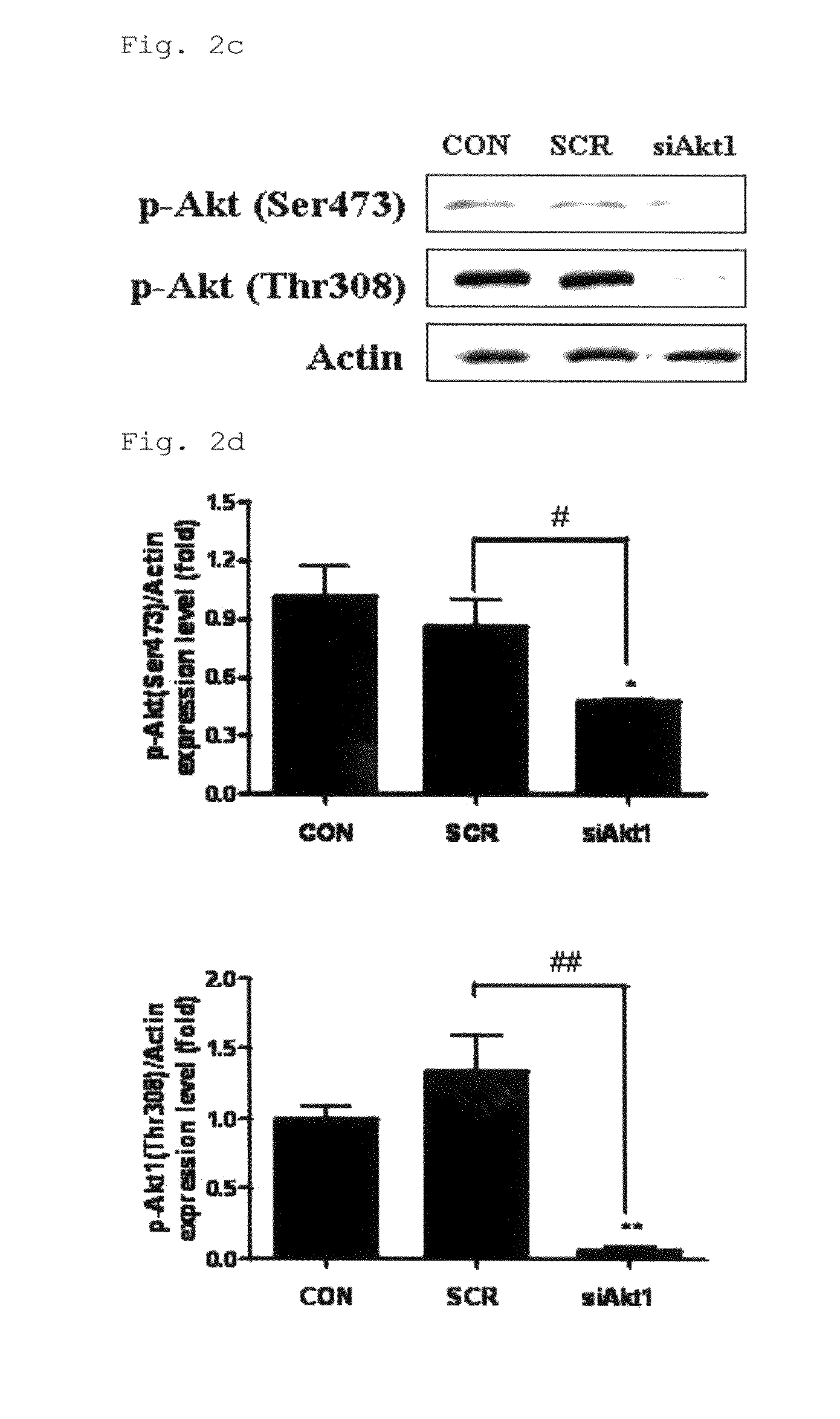Gene therapy and pharmaceutical composition for prevention and treatment of lung cancer
a technology of gene therapy and pharmaceutical composition, applied in the direction of transferases, aerosol delivery, peptide/protein ingredients, etc., can solve the problems of restricting the practical use of viral vectors, invasive gene transfer strategies, and unsuitable use, so as to achieve superior therapeutic efficiency and treatment efficiency
- Summary
- Abstract
- Description
- Claims
- Application Information
AI Technical Summary
Benefits of technology
Problems solved by technology
Method used
Image
Examples
example 1
Materials
[0056]Polyethylene imine (Mn 423, 97% purity) and poly(ethylene glycol)diacrylate (Mn 258, 97% purity) were purchased from Sigma-Aldrich (St. Louis, Mo., USA), and pcDNA3.1-green fluorescent protein (GFP) (6.1 kb) was purchased from Invitrogen (Carlsbad, Calif., USA). Monoclonal antibodies against Akt1 and phospho-Akt at Thr308 were produced using a general method described elsewhere.
[0057]Anti-phospho-Akt1 and anti-mTOR both at Ser473, and anti-pmTOR at Ser2448 were obtained from Cell Signaling Technology (Beverly, Mass., USA). Other antibodies for western blotting and IHC were purchased from Santa Cruz Biotechnology (Santa Cruz, Calif., USA).
Construction of Akt1 siRNA and Preparation of Poly(Ester Amine) / siRNA Complex
[0058]Oligonucleotides encoding the 19-mer hairpin sequence of siRNA specific for Akt1 were designed using the method suggested by Meng et al. (2006). A scrambled siRNA which has the same nucleotide composition as the siRNA, but lacks significant sequence hom...
example 2
In Vivo Aerosol Delivery of Poly(Ester Amine) / siRNA Complex
[0060]Experiments were performed on 5-week-old ICR mice and K-ras null mice. ICR mice were purchased from Joongang Laboratory Animal (Seoul, Korea) and K-ras null mice were obtained from the Human Cancer Consortium-National Cancer Institute (Frederick, Md., USA). The animals were kept in the laboratory animal facility with temperature and relative humidity maintained at 23±2° C. and 50±20%, respectively, under a 12-hour light / dark cycle. All methods used in these experiments were approved by the Animal Care and Use Committee at Seoul National University (SNU-061110-5). For gene delivery, mice were placed in the nose-only exposure chamber and exposed to the aerosol based on the methods used previously (Tehrani et al., 2007; Kim et al., 2004).
[0061]For the test of gene delivery efficiency of poly(ester amine), ICR mice were divided into three groups of three mice each. Two groups were exposed to aerosol containing GFP plasmid ...
example 3
Western Blot Analysis
[0064]For Western blot analysis, the lungs of three among four mice were selected by random sampling. After measuring the protein concentration of homogenized lysates using a Bradford kit (Bio-Rad, Hercules, Calif., USA), 30 μg protein was separated on sodium dodecyl sulfate-polyacrylamide electrophoresis gel and transferred to nitrocellulose membranes.
[0065]The membranes were blocked for 1 hour in (TTBS) containing 5% skim milk, followed by immunoblotting by incubating the membranes overnight with their corresponding primary antibodies in 5% skim milk at 4° C., and then with secondary antibodies conjugated to horseradish peroxidase (HRP) for 3 hours at room temperature or overnight at 4° C.
[0066]After washing, bands of interest were analyzed by the luminescent image analyzer LAS-3000 (Fujifilm, Tokyo, Japan), and the quantification of Western blot analysis was done using the Multi Gauge version 2.02 program (Fujifilm, Tokyo, Japan).
PUM
| Property | Measurement | Unit |
|---|---|---|
| Composition | aaaaa | aaaaa |
| Therapeutic | aaaaa | aaaaa |
Abstract
Description
Claims
Application Information
 Login to View More
Login to View More - R&D
- Intellectual Property
- Life Sciences
- Materials
- Tech Scout
- Unparalleled Data Quality
- Higher Quality Content
- 60% Fewer Hallucinations
Browse by: Latest US Patents, China's latest patents, Technical Efficacy Thesaurus, Application Domain, Technology Topic, Popular Technical Reports.
© 2025 PatSnap. All rights reserved.Legal|Privacy policy|Modern Slavery Act Transparency Statement|Sitemap|About US| Contact US: help@patsnap.com



